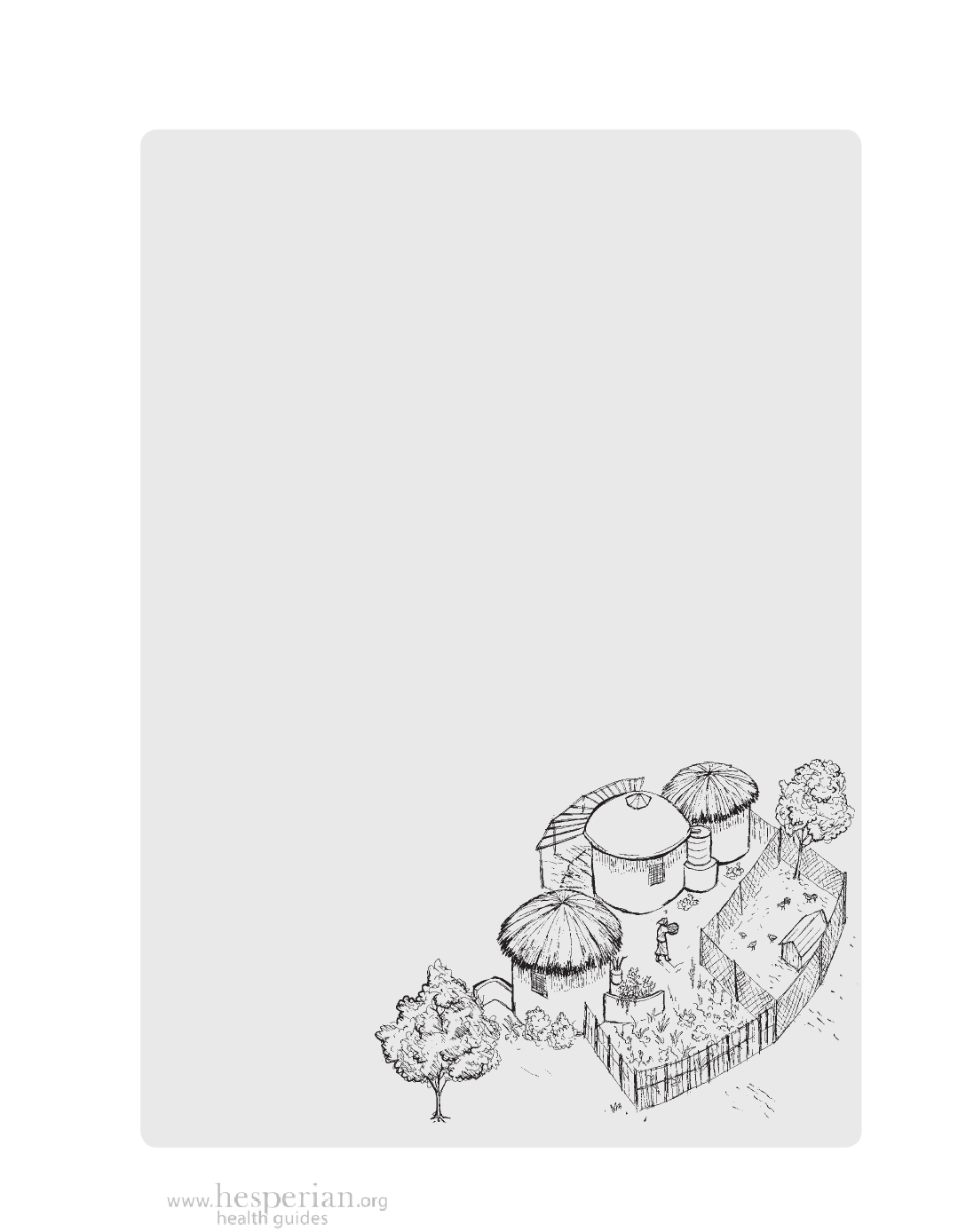
Planning with Communities 385
Building homes and community
For many years, poor people in South Africa have lived with a housing crisis
that makes their poverty and health problems worse. The government tried to
solve this by building housing for poor people. But the new houses were small,
dark, too close together, and built in such a way that they were either too hot
or too cold. They were far from schools, health centers, and shops, and had
poor access to water, poor sanitation, did not keep the bad weather out, and
needed to be repaired often. They just kept poor people poor.
In response to these problems, a group called Tlholego came together
to build a new kind of village. They designed homes using locally available
materials like earth, bricks, and straw. Using mud bricks on stone foundations,
they designed and built houses that were healthy and attractive for the lowest
possible cost (a little more than US $1000 for each house).
Besides being comfortable, the houses were designed to make the best use of
local conditions. They had electricity, tanks to collect rainwater, gardens that
reused water from the kitchen and bath, composting toilets, water heated by
the sun, and window screens to keep insects out. With windows facing the sun,
shade trees all around, and solid mud brick walls, the houses were protected
from extreme heat and cold. Tlholego taught people how to build the houses.
This saved on construction costs, and made sure each family had a house they
were proud to live in.
The houses were planned and built around common spaces, such as roads,
gardens, and public buildings. This way, each family’s home was a part of the
larger community. Tlholego organized an education and training program
for adults, and a school where children could learn
reading and math, and also about farming,
health, and the environment.
Tlholego is an “eco-village,” a village
built in harmony with the environment
and the needs of its people. Rather
than building cheap homes for poor
people, Tlholego built a community.
Through their success, Tlholego
showed it was possible
for people who were
once forced to live
in poverty to use
their own resources
to build homes and a
community rich
in dignity.
A Community Guide to Environmental Health 2012